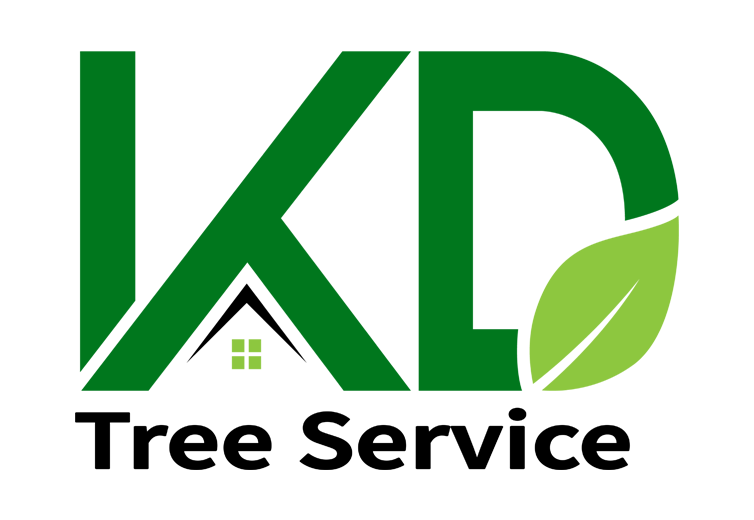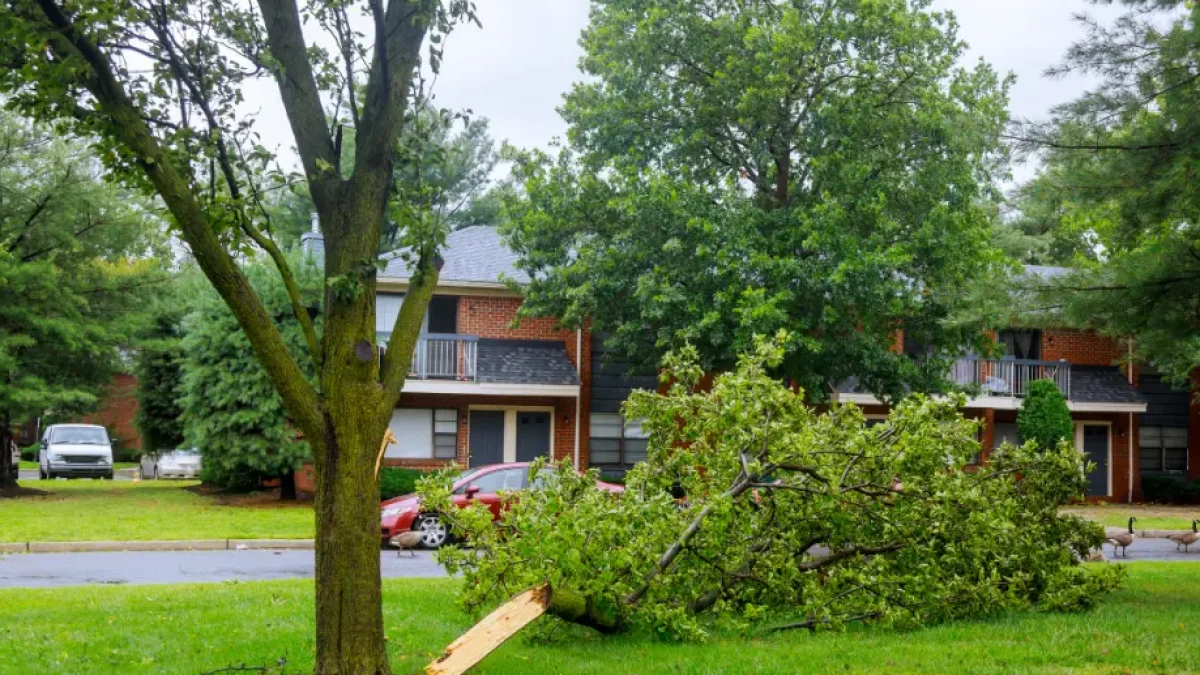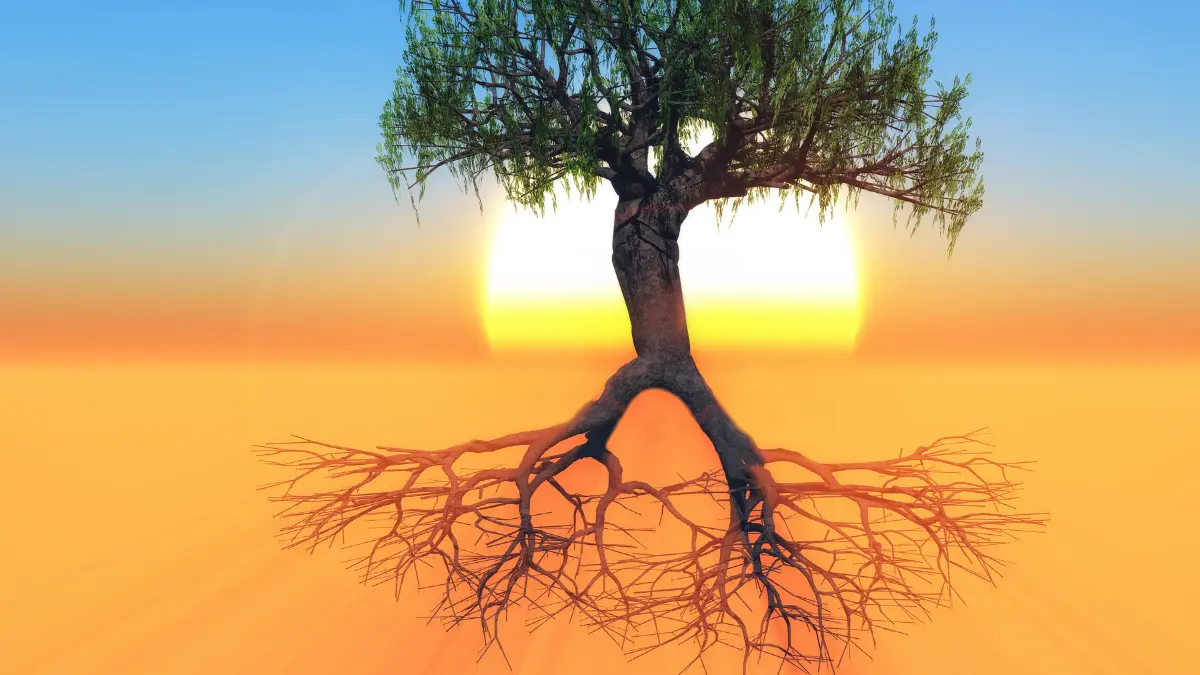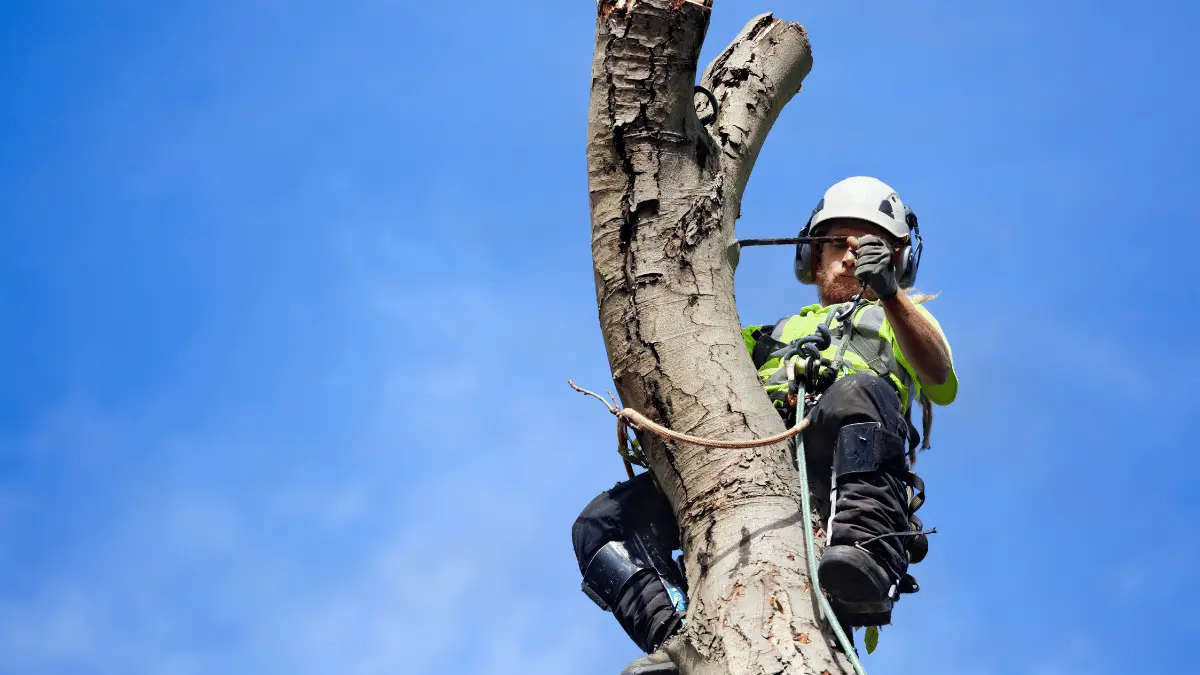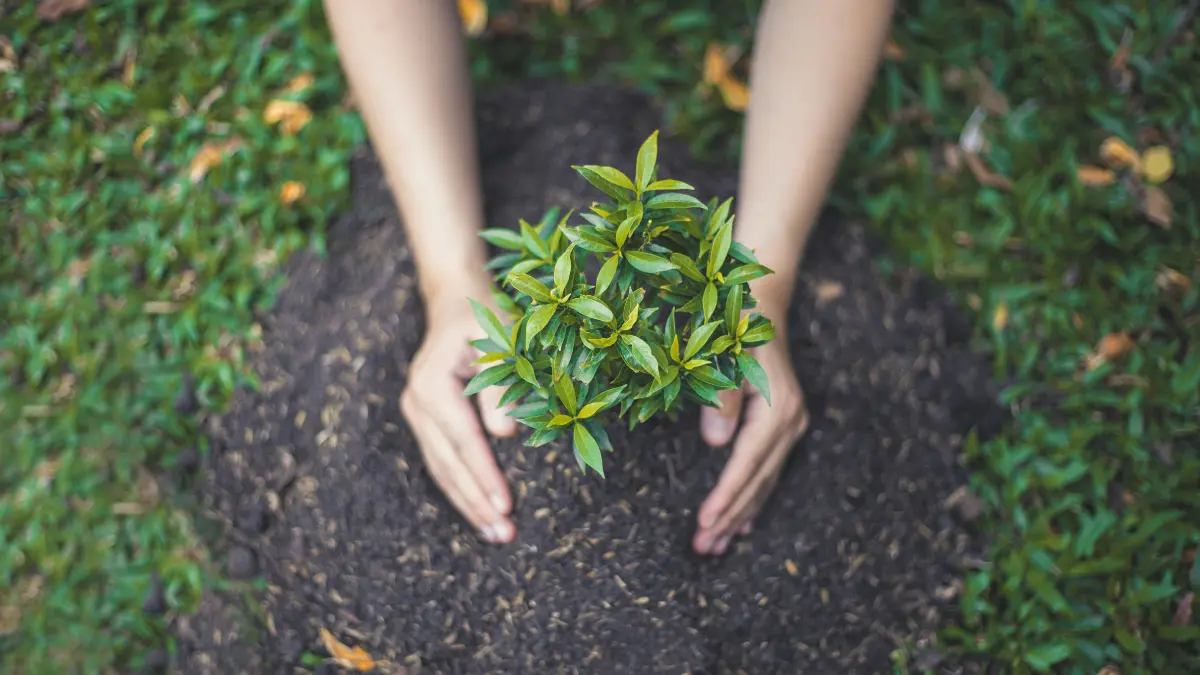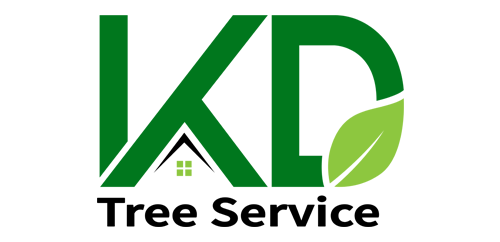Storms can hit Binghamton, New York, without any notice, bringing with them powerful winds, a lot of rain, and even snow or ice that can do serious damage to your property. Trees are among the most frequent targets of storm damage. Dealing with storm-damaged trees can be hazardous and difficult, whether the damage consists of broken limbs, uprooted trunks, or leaning trees that put stress on power lines.
You’re not alone if you’re unsure of what to do after storm tree damage in Binghamton, NY. The optimal course of action for safety, property protection, and tree recovery can sometimes be unclear to homeowners. We’ll cover all you need to know in this blog, from determining the extent of the tree damage to locating trustworthy emergency tree services in the Binghamton region.

The Importance of Fall Tree Care in Binghamton, New York
1. Put Safety First
Staying safe is the first thing that comes to mind as a storm strikes. Damaged trees are not always stable and might present significant risks. Look around your yard from a safe distance before checking on it.
- Watch out for:Power lines that have fallen or are sagging: Avoid going close to trees that are touching or close to wires. Make immediate contact with your utility company and emergency services.
- Hanging branches or split trunks: These could break free at any time and pose a serious risk.
- Leaning trees: Even in the absence of wind, a tree that has become more slanted than typical may topple.
If anything looks risky, don’t take chances. Call professionals who specialize in emergency tree care Binghamton. Stay off ladders and avoid using any tools until the area is declared safe.
2. Safely Evaluate the Tree Damage
After you’ve ensured that everything is secure, carefully examine the state of your trees. You only need to look at what is visible from the ground; you don’t need to climb or cut anything.
Consider the following questions:
- Are big limbs hanging or broken off?
- Does the trunk appear split or have noticeable cracks?
- Are tiny branches cut off or snapped off?
- Has the tree begun to tilt more than normal?
- Do the roots appear disturbed or lifted?
You may get a sense of the severity with a simple tree assessment like this. The responses will determine whether the tree remains or disappears. The best course of action if you’re unsure is to contact an expert.
3. Contact Emergency Tree Services in Binghamton
If you find that your tree has suffered major damage, it’s time to bring in experts. Crews that offer emergency tree services are equipped to manage storm-related hazards quickly and safely. They have the training and tools to handle anything from hanging limbs to fallen trees.
Choosing a local provider of storm-damaged tree services in Binghamton, NY, makes a difference. They know the trees and the area’s weather challenges.
You’ll likely need emergency tree removal in Binghamton if:
- A tree has fallen onto your home or garage
- Big limbs are threatening your roof or utility lines.
- A tree is blocking a road, driveway, or path.
Quick action in these cases helps avoid more damage and keeps everyone safe.
4. Choose Whether to Remove or Repair the Tree
It’s not necessary to remove every damaged tree. With expert care and supervision, some people can recover. After examining the problem, a qualified tree specialist will determine what is possible.
- They will examine:The amount of the damage: While minor fractures can usually be repaired, major structural issues may necessitate removal.
- Health of the tree before the storm: A tree that was doing well before the storm is more likely to recover.
- Species and maturity: Some trees are more resilient to storm stress than others.
Where the tree is close to a building or electrical lines, It would be safest to remove it if it’s too close to a building or electrical lines.
Tree Repair Options
If the tree is salvageable, some common tree recovery strategies include:
- Trimming back broken or splintered branches
- Using cables or braces to stabilize limbs or the trunk
- Treating wounds to protect against rot or pests
- Feeding and watering the tree to support regrowth
Repairing storm-damaged trees in Binghamton takes time and care, but it’s worth it for trees that provide shade, beauty, or sentimental value.
When It’s Time to Remove Trees
Sometimes the harm is simply too great. Unsalvageable trees become a liability. Removal is probably necessary if:
- The tree has been uprooted entirely.
- The trunk has a huge break in it.
- The tree has lost more than half of its branches.
- The roots have been ripped up and are no longer secured.
In these situations, contact Binghamton tree removal services immediately. It can be risky to try it alone, particularly if there are big trees or wires nearby. Tree care experts have the tools necessary to complete the task securely.
5. Get Rid of Trees That Cannot Be Saved
Unfortunately, some trees cannot be fixed. Removal is frequently the safest course of action when there is damage to the roots, trunk splitting, or excessive canopy loss.
Consider hiring a tree removal service if:
- The tree is now entirely down.
- The trunk is hollow or severely fractured.
- It seems to be either dead or dying.
- It is dangerously slanting close to a house or pavement.
Tree removal in confined areas and difficult locations is something that local experts are qualified to do. They employ machines and safety equipment to streamline the procedure and guard against property damage.
6. Make a Storm Protection Plan for the Future
Although the weather is beyond anyone’s control, there are steps you can take to lower your risk before the next storm occurs. A wise strategy to safeguard your house and yard is to practice preventative tree maintenance.
Among the useful actions are:
- Every year, get your trees inspected by an arborist.
- Trim branches that appear weak or dead on a regular basis.
- Install support structures for trees that require assistance to remain sturdy.
- Monitor the condition of the soil to promote strong root development.
Putting money into preventative care now can reduce anxiety and emergency situations later. Tree health treatments are available all year round from a number of Binghamton tree damage repair specialists.
The Benefits of Hiring a Local Binghamton Arborist

Most individuals aren’t trained to deal with storm-damaged trees, and the risk isn’t worth it. Professional arborists possess the expertise to make the best decisions about the safe preservation or removal of a tree.
- It makes even more sense to pick a local expert because:
- They are aware of the common tree species in the Binghamton area.
- They are aware of utility issues, property lines, and municipal codes.
- In an emergency, they can get to your house more quickly.
- Many provide round-the-clock emergency arborist services.
Remaining with a Binghamton-based business guarantees a more individualized experience and contributes to the betterment of your community.

FAQs
What should I do immediately after a storm-damaged tree?
To have the damage safely inspected, stay well away from any downed power wires or hanging branches, and then contact reputable local emergency tree services.
Is it possible to save a tree injured by a storm?
Depending on the extent of the damage, yes. After examining the tree, a qualified arborist can determine if careful pruning or tree repair will promote healthy tree recovery.
How can I stop storm damage to trees in the future?
To reduce potential storm damage, conduct routine tree evaluations, trim any dead or weak limbs, and brace or cable any trees that are at risk.
Don’t hesitate to contact KD Tree Services if you have storm-damaged trees on your property or if you’re unsure how to handle fallen branches or tree threats (518) 425-TREE.

